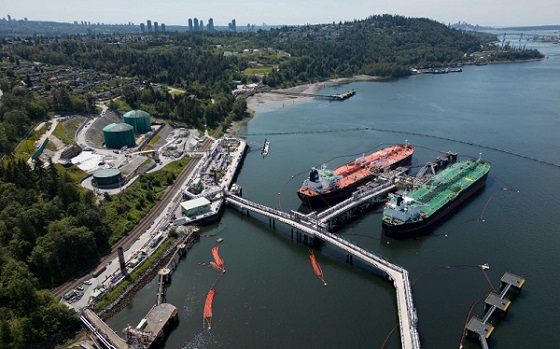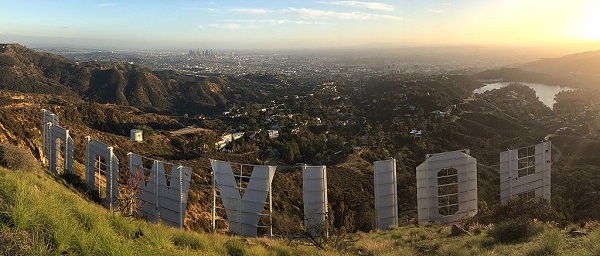Uncategorized
Rain could hamper search for victims of California wildfire

CHICO, Calif. — It’s been 12 days since Christina Taft started the frantic search for her mother Victoria, who refused to evacuate their Paradise home as flames neared, and six days since she gave authorities a cheek swab to identify remains that are likely her mother’s.
She still hasn’t received confirmation that her mother is dead, and says she’s been frustrated by what she feels is a lack of communication from Butte County officials.
“They said they found remains, they didn’t say her remains. They won’t confirm it to me the whole time,” Taft said Monday.
With 79 people killed in the nation’s deadliest wildfire in at least a century, there are still nearly 700 names on the list of those unaccounted for. While it’s down from nearly 1,000 the day before, it is inexact, progress has been slow, and the many days of uncertainty are adding to the stress.
More than a dozen people are marked as “unknowns,” without first or last names. In some cases, names are listed twice or more times under different spellings. Others are confirmed dead, and their names simply haven’t been taken off yet.
Survivors and relatives of those caught in the fire in Northern California are using social media to get the word out: In some cases, to post that their loved ones were safe; in others, to plead for help.
“Aunt Dorothy is still missing. There has been confusion going on at the Sheriffs office regarding her whereabouts because she was taken off the list,” a man wrote on Facebook on Monday.
“I have an uncle and two cousins that I have not been able to make contact with,” one woman wrote on Facebook, with their names. “Any info would be appreciated.”
Butte County Sheriff Kory Honea has said he released the rough and incomplete list in hopes that people would contact authorities to say they are OK. He has called it “raw data” compiled from phone calls, emails and other reports.
“We put the list out. It will fluctuate. It will go up. It will go down because this is in a state of flux,” Honea said Monday. “My view on this has been that I would prefer to get the information out and start working to find who is unaccounted for and who is not. I would put progress over perfection.”
Officials have also culled reports from the earliest hours of the disaster, when fire knocked out mobile phone communications and thousands fled, some to safe shelter that was hundreds of miles away.
Honea said his office was working with the Red Cross to account for people entering and leaving shelters. Evacuees are also helping authorities narrow the list, sometimes by chance.
Robert James Miles, who lost his Paradise trailer in the blaze, was staying at a shelter in Chico where people posted names of those they hadn’t heard from. Miles said he alerted a Red Cross worker Saturday that he recognized eight names on the board as friends he knew were OK.
“Two of them were in the shelter,” he said with a chuckle.
Owen and Phyllis Suihkonen understand the chaos. Their family is scattered after they lost their home to the wildfire, as did their two adult children.
Phyllis Suihkonen, 69, says she spotted the names of two friends on the list of unaccounted people, and doesn’t know if they are safe. But her daughter has seen names of friends who are OK and called sheriff’s officials to let them know.
“I’m concerned,” Phyllis said. “But like I said, there’s been other friends’ names on the list that have been accounted for and taken off.”
Meanwhile, those searching for bodies were in a race against the weather, as rain was forecast for Wednesday. The precipitation could help knock out the flames, but it could also hinder the search by washing away fragmentary remains and turning ash into a thick paste.
The fire, which burned at least 236 square miles (611 square
Alcatraz Island, San Francisco’s cable cars, the Oakland Zoo and other San Francisco Bay Area area attractions were closed Monday because of smoke from the blaze some 140 miles (225
California Insurance Commissioner Dave Jones said it is “way too early” to estimate the damage done by the wildfire. But for perspective, he said the Northern California fires that gutted 6,800 homes last year resulted in $12.6 billion in insured losses.
“It’s going to be a long and painful process,” he said.
___
Har reported from San Francisco.
___
Associated Press journalists Kathleen Ronayne in Sacramento, California, and Paul Elias and Jocelyn Gecker in San Francisco also contributed to this report.
Sudhin Thanawala And Janie Har, The Associated Press
Uncategorized
Cost of bureaucracy balloons 80 per cent in 10 years: Public Accounts

The cost of the bureaucracy increased by $6 billion last year, according to newly released numbers in Public Accounts disclosures. The Canadian Taxpayers Federation is calling on Prime Minister Mark Carney to immediately shrink the bureaucracy.
“The Public Accounts show the cost of the federal bureaucracy is out of control,” said Franco Terrazzano, CTF Federal Director. “Tinkering around the edges won’t cut it, Carney needs to take urgent action to shrink the bloated federal bureaucracy.”
The federal bureaucracy cost taxpayers $71.4 billion in 2024-25, according to the Public Accounts. The cost of the federal bureaucracy increased by $6 billion, or more than nine per cent, over the last year.
The federal bureaucracy cost taxpayers $39.6 billion in 2015-16, according to the Public Accounts. That means the cost of the federal bureaucracy increased 80 per cent over the last 10 years. The government added 99,000 extra bureaucrats between 2015-16 and 2024-25.
Half of Canadians say federal services have gotten worse since 2016, despite the massive increase in the federal bureaucracy, according to a Leger poll.
Not only has the size of the bureaucracy increased, the cost of consultants, contractors and outsourcing has increased as well. The government spent $23.1 billion on “professional and special services” last year, according to the Public Accounts. That’s an 11 per cent increase over the previous year. The government’s spending on professional and special services more than doubled since 2015-16.
“Taxpayers should not be paying way more for in-house government bureaucrats and way more for outside help,” Terrazzano said. “Mere promises to find minor savings in the federal bureaucracy won’t fix Canada’s finances.
“Taxpayers need Carney to take urgent action and significantly cut the number of bureaucrats now.”
Table: Cost of bureaucracy and professional and special services, Public Accounts
| Year | Bureaucracy | Professional and special services |
|
$71,369,677,000 |
$23,145,218,000 |
|
|
$65,326,643,000 |
$20,771,477,000 |
|
|
$56,467,851,000 |
$18,591,373,000 |
|
|
$60,676,243,000 |
$17,511,078,000 |
|
|
$52,984,272,000 |
$14,720,455,000 |
|
|
$46,349,166,000 |
$13,334,341,000 |
|
|
$46,131,628,000 |
$12,940,395,000 |
|
|
$45,262,821,000 |
$12,950,619,000 |
|
|
$38,909,594,000 |
$11,910,257,000 |
|
|
$39,616,656,000 |
$11,082,974,000 |
Uncategorized
Trump Admin Establishing Council To Make Buildings Beautiful Again


From the Daily Caller News Foundation
By Jason Hopkins
The Trump administration is creating a first-of-its-kind task force aimed at ushering in a new “Golden Age” of beautiful infrastructure across the U.S.
The Department of Transportation (DOT) will announce the establishment of the Beautifying Transportation Infrastructure Council (BTIC) on Thursday, the Daily Caller News Foundation exclusively learned. The BTIC seeks to advise Transportation Secretary Sean Duffy on design and policy ideas for key infrastructure projects, including highways, bridges and transit hubs.
“What happened to our country’s proud tradition of building great, big, beautiful things?” Duffy said in a statement shared with the DCNF. “It’s time the design for America’s latest infrastructure projects reflects our nation’s strength, pride, and promise.”
“We’re engaging the best and brightest minds in architectural design and engineering to make beautiful structures that move you and bring about a new Golden Age of Transportation,” Duffy continued.
Mini scoop – here is the DOT’s rollout of its Beautifying Transportation Infrastructure Council, which will be tasked with making our buildings beautiful again. pic.twitter.com/
9iV2xSxdJM — Jason Hopkins (@jasonhopkinsdc) October 23, 2025
The DOT is encouraging nominations of the country’s best architects, urban planners, artists and others to serve on the council, according to the department. While ensuring that efficiency and safety remain a top priority, the BTIC will provide guidance on projects that “enhance” public areas and develop aesthetic performance metrics.
The new council aligns with an executive order signed by President Donald Trump in August 2025 regarding infrastructure. The “Making Federal Architecture Beautiful Again” order calls for federal public buildings in the country to “respect regional architectural heritage” and aims to prevent federal construction projects from using modernist and brutalist architecture styles, instead returning to a classical style.
“The Founders, in line with great societies before them, attached great importance to Federal civic architecture,” Trump’s order stated. “They wanted America’s public buildings to inspire the American people and encourage civic virtue.”
“President George Washington and Secretary of State Thomas Jefferson consciously modeled the most important buildings in Washington, D.C., on the classical architecture of ancient Athens and Rome,” the order continued. “Because of their proven ability to meet these requirements, classical and traditional architecture are preferred modes of architectural design.”
The DOT invested millions in major infrastructure projects since Trump’s return to the White House. Duffy announced in August a $43 million transformation initiative of the New York Penn Station in New York City and in September unveiledmajor progress in the rehabilitation and modernization of Washington Union Station in Washington, D.C.
The BTIC will comprise up to 11 members who will serve two-year terms, with the chance to be reappointed, according to the DOT. The task force will meet biannually. The deadline for nominations will end Nov. 21.
-

 Alberta2 days ago
Alberta2 days agoAlberta to protect three pro-family laws by invoking notwithstanding clause
-

 Business2 days ago
Business2 days agoCanada is failing dismally at our climate goals. We’re also ruining our economy.
-

 Health1 day ago
Health1 day agoCDC’s Autism Reversal: Inside the Collapse of a 25‑Year Public Health Narrative
-

 Daily Caller1 day ago
Daily Caller1 day agoBREAKING: Globalist Climate Conference Bursts Into Flames
-

 Health1 day ago
Health1 day agoBREAKING: CDC quietly rewrites its vaccine–autism guidance
-

 Energy1 day ago
Energy1 day agoHere’s what they don’t tell you about BC’s tanker ban
-

 Bruce Dowbiggin1 day ago
Bruce Dowbiggin1 day agoBurying Poilievre Is Job One In Carney’s Ottawa
-

 Alberta2 days ago
Alberta2 days ago‘Weird and wonderful’ wells are boosting oil production in Alberta and Saskatchewan










